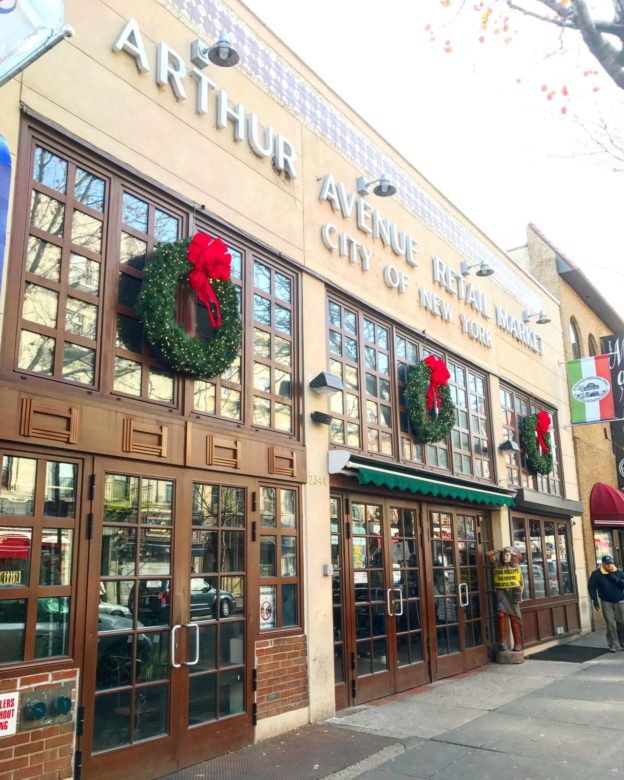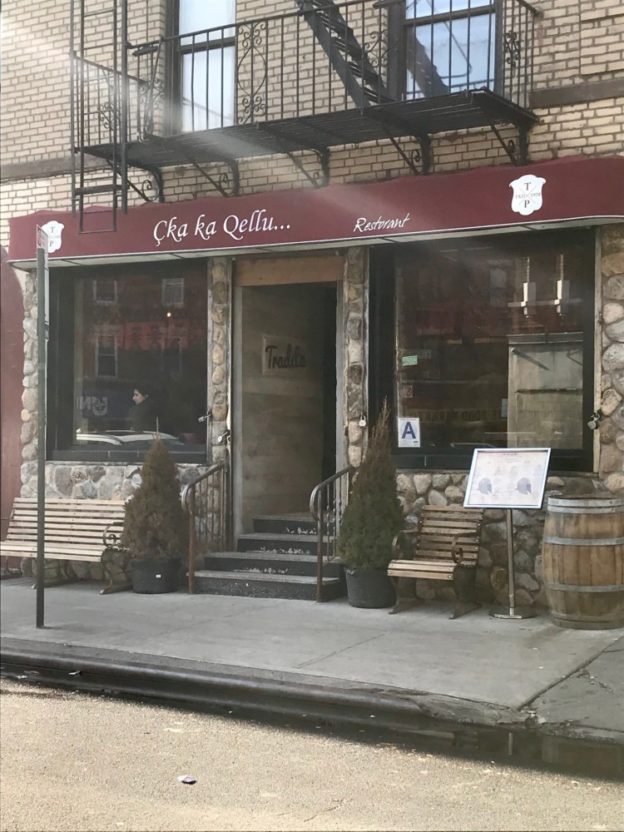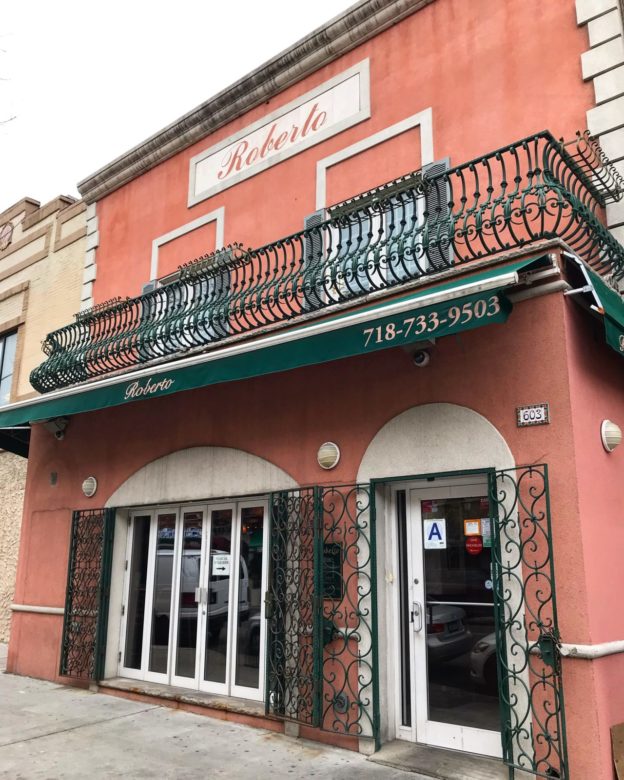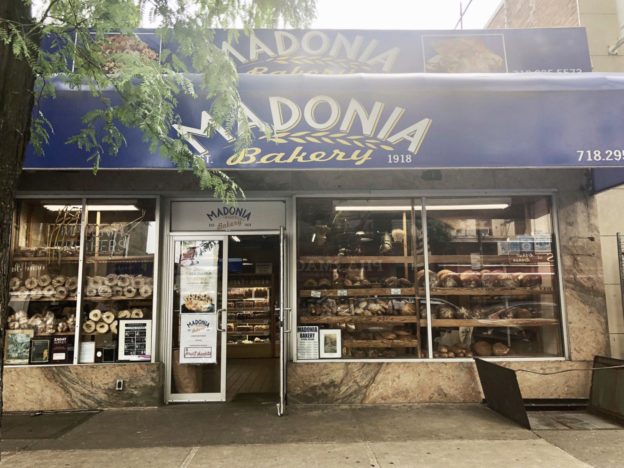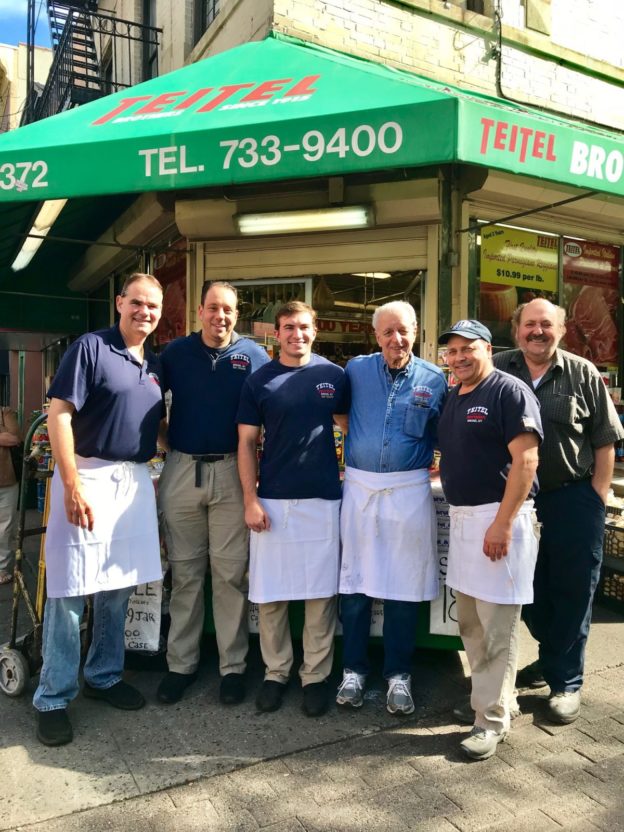27 East 187th Street
1915-17
Anthony F.A. Schmitt
This beautifully preserved Romanesque Revival church, built for a parish founded in 1906, is the spiritual heart of the Belmont community. The twin-towered church has a triple portal, a great wheel window, and superb brickwork. Italian Catholic congregations typically built their churches in either Romanesque or classical styles, as opposed to Gothic, which they associated with Irish churches where Italian immigrants often found a frosty welcome.
The architect of Our Lady of Mount Carmel, Anthony F.A. Schmitt, was a Roman Catholic architect with such credits as Holy Redeemer College (1934) in Washington, D.C., the Church of St. Pius V (1906-07) in Mott Haven, and Immaculate Conception School (1901) on Melrose Avenue and 151st Street.
The name “Our Lady of Mount Carmel”–shared by well-known churches in East Harlem and in Williamsburg, Brooklyn, as well as by the great shrine in Rosebank, Staten Island– refers to the 13th-century appearance of the Blessed Virgin Mary to St. Simon Stock in Cambridge, England. She bestowed upon him the scapular (a devotional artifact in the form of a cloth pendant) of Our Lady of Mount Carmel. In the Old Testament, Elijah lived in a grotto in Mount Carmel in present-day Israel. In the 12th century, the Carmelite Order was founded there.
This block of 187th Street is one of the finest in Belmont. The sidewalks are wide on both sides of the street, the tenement buildings with stores in their bases are beautifully scaled to the street, there are plenty of street trees, and the church lends its special excitement. When one imagines a young Dion DiMucci singing a cappella on the corner near the church, a whole slice of New York’s rich ethnic past comes vibrantly to mind.
Photo by Hugo L. Gonzalez.
Adams Place & East 183rd Street
This irregularly shaped open space, bounded by Crescent Avenue, 183rd Street, Adams Place, and Arthur Avenue, was created in 1918 and named for John D’Auria and Henry Murphy, two young men from the neighborhood who lost their lives in World War I. Within the “triangle” is a large bust of Christopher Columbus, executed in marble ca. 1926 by the famous Bronx-based stone-carver and sculptor Attilio Piccirilli. It was originally placed in front of P.S. 45 at Bathgate Avenue and Lorillard Place, and moved to D’Auria-Murphy Triangle in 1992.
Across Arthur Avenue to the west is St. Barnabas Hospital (now known as SBH Health System). The hospital site was originally the estate of Jacob Lorillard (1774-1839). Jacob’s descendants deeded the land in 1874 to the Home for Incurables, and Jacob’s mansion served as a doctors’ residence until it was demolished in 1932. In 1947 the Home for Incurables changed its name to St. Barnabas Hospital.
This is the southern gateway to the main commercial section of Arthur Avenue. Across Crescent Avenue from D’Auria-Murphy Triangle, Prince Coffee Shop offers a generous sidewalk café, bordered by mature street trees, a surpassingly urbane segue to the bustle of Arthur Avenue.
Photo courtesy of NYC Park Department.
500 East Fordham Road
1929
William H. Gompert
This stately block-long building, with its distyle-in-antis portico, raises its distinctive cupola over Fordham Road. The architect, William H. Gompert (1875-1946), succeeded the long-serving C.B.J. Snyder as the New York City Board of Education architect in 1923, and served until 1927, though several of his designs, including Theodore Roosevelt High School, were not completed until after he had resigned. (A school designed by Snyder may be seen nearby: P.S. 32, at Belmont Avenue and 182nd Street, was built in 1900.)
Gompert, a New York City native, attended Pratt Institute and worked for McKim, Mead & White and for Maynicke & Franke before forming his own firm in 1906. He designed some 170 schools in the five boroughs, including the High School of Music and Art (1924) on West 135th Street, DeWitt Clinton High School (1929) in the Bedford Park section of the Bronx, James Madison High School (1926) at 3787 Bedford Avenue in Brooklyn, Jamaica High School (1927) in Jamaica, Queens, Seward Park High School (1929) on Grand Street in the Lower East Side, and, possibly his masterpiece, P.S. 101 (1929) in Forest Hills Gardens.
Notable alumni of Theodore Roosevelt High School include June Allyson, once one of the most popular movie stars in the world; Rocky Colavito, the slugging right-fielder who in his major league baseball career appeared in nine All-Star Games; Ace Frehley, lead guitarist of the rock band Kiss, and Jimmie “J.J.” Walker, comedian and star of the 1970s TV show Good Times. Perhaps most notable among the school’s alumni is Chazz Palminteri (b. 1952). Palminteri’s one-man play, A Bronx Tale, premiered off-Broadway in 1989 and is set in Belmont. In 1993, Robert De Niro adapted the play into a movie and a musical version, directed by De Niro, ran on Broadway from 2016 to 2018.
Photo courtesy of NYCago.


